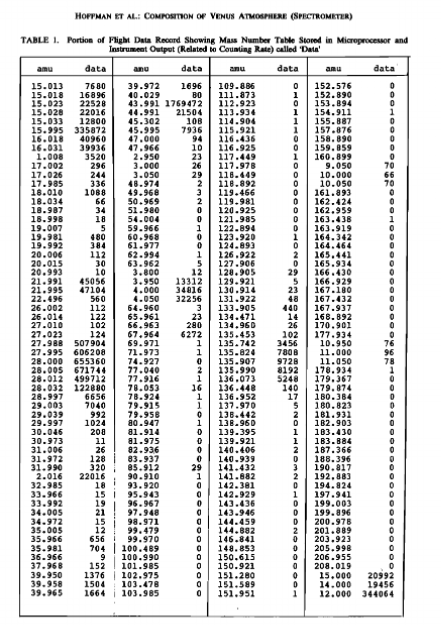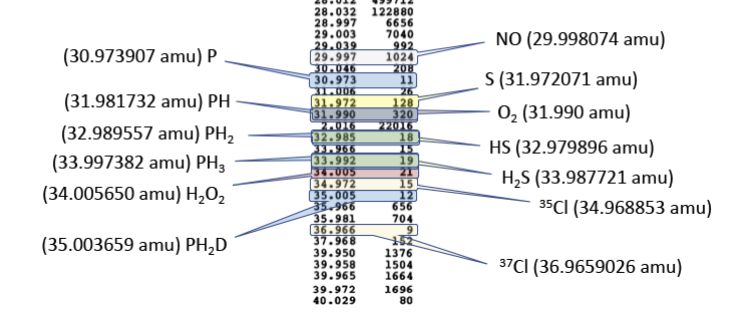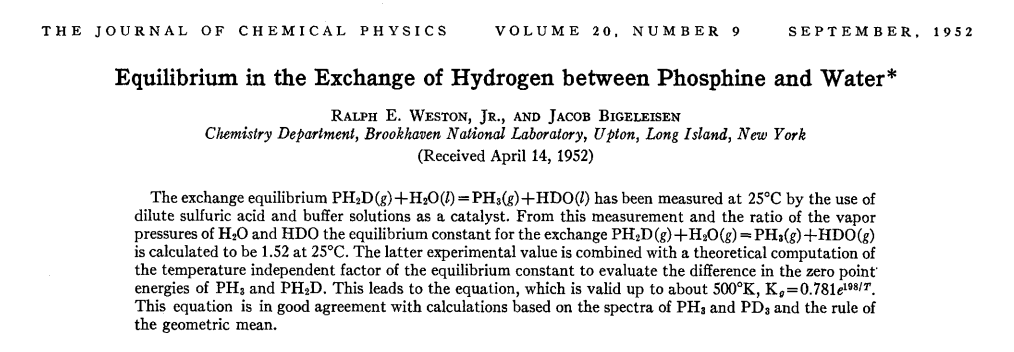some unsolicited peer reviewing for @NatureAstronomy
This submitted & #39;Matters Arising& #39; (comment) by @RakeshMogul et al. on the Greaves et al. phosphine on Venus paper has gotten some attention
https://arxiv.org/ftp/arxiv/papers/2009/2009.12758.pdf
1/8">https://arxiv.org/ftp/arxiv...
This submitted & #39;Matters Arising& #39; (comment) by @RakeshMogul et al. on the Greaves et al. phosphine on Venus paper has gotten some attention
https://arxiv.org/ftp/arxiv/papers/2009/2009.12758.pdf
1/8">https://arxiv.org/ftp/arxiv...
[aside: Given their normal obsession with embargoes, I would have thought a Nature journal would frown on uploading submitted comments to arxiv before peer review, but what do I know?]
2/8
2/8
Mogul et al. looked at a data table from a 1980 paper reporting data from a mass spec dropped through Venus& #39; atmosphere by the Pioneer-Venus spacecraft and assigned some mass peaks to phosphine isotopologues. They conclude the "LMNS data support the presence of phosphine" 3/8
This corresponds to a PH2D/PH3 ratio of 0.63 or 4050 times terrestrial ocean water. The authors cite a 1952 paper reporting an equilibrium constant for phosphine-water isotope exchange of 1.5 and conclude that the PH3/PH2D ratio is consistent with this. But ...
5/8
5/8
This is an incorrect interpretation of the equilibrium constant. From the Weston and Bigeleisen & #39;52 paper, we see that K1 (equilibrium constant) is defined as the (HDO/H2O)/(PH2D/PH3) ratio. Thus K1=1.5 means that the PH2D/PH3 ratio should be 2/3 of the water D/H ratio.
6/8
6/8
Venus& #39; D/H ratio is about 120 times terrestrial, so if this is the water ratio, then PH2D/PH3 would expected to be 80 times Earth, or 0.0125
So if LNMS peak at mass 33 is indeed PH3, then only 0.24 counts of PH2D would be expected, not 12, as observed!
7/8
So if LNMS peak at mass 33 is indeed PH3, then only 0.24 counts of PH2D would be expected, not 12, as observed!
7/8
I have not thought through what this might mean for the rest of the Mogul+ comment, but I am skeptical that the assignment of the mass 33 and 34 peaks to phosphine is correct.
Tell me why I am wrong!!!!
8/8 fin.
Tell me why I am wrong!!!!
8/8 fin.
again ,oops, should be mass 34 and 35

 Read on Twitter
Read on Twitter





